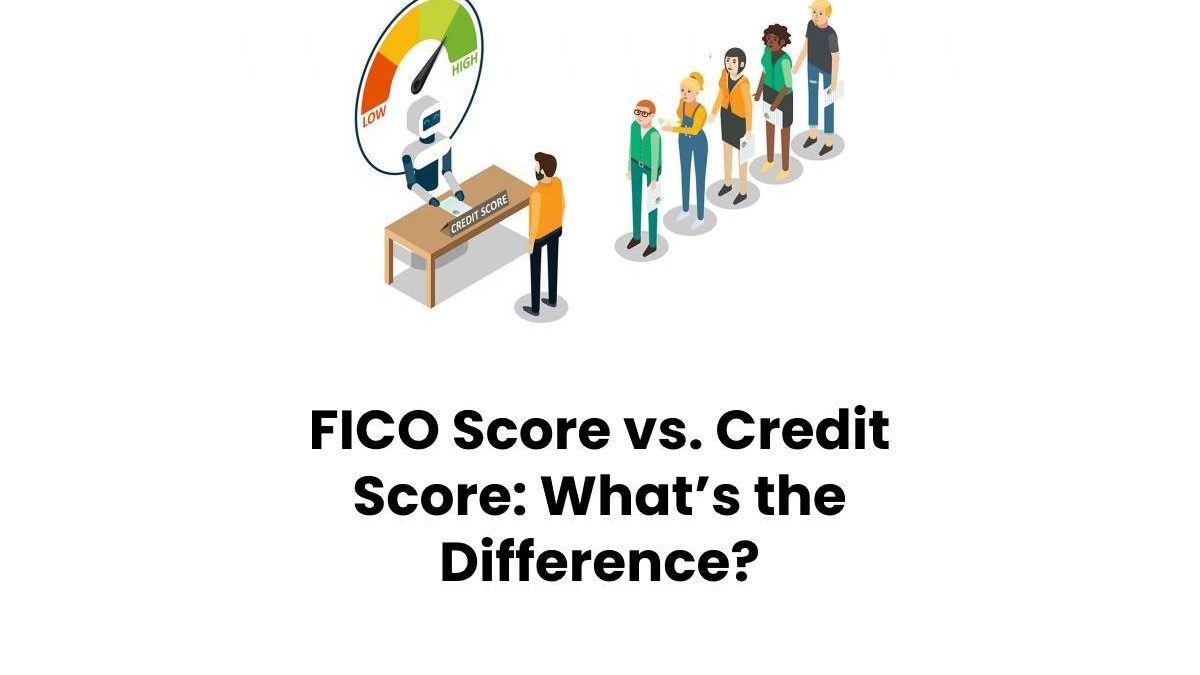FICO Score vs. Credit Score
An individual’s credit score reflects how they handle their finances and debts. Different lenders use different credit scores, such as FICO credit score and VantageScores, to appraise the risk before lending borrowers loans.
This article will take you through the difference between FICO scores and credit scores. Additionally, you’ll get to know their importance to your financial health.
Table of Contents
What Is a Credit Score?
A credit score is a three-figure representation of your financial health that lenders can use to determine how responsible you’re with debts and credit.
Generally, a lower credit score demonstrates that you don’t pay your debts on time, or worse, default them. On the other hand, a higher credit score suggests that you take out loans and pay them back on time. Managing debt effectively is crucial for maintaining a healthy credit score, but sometimes, despite your best efforts, you might find yourself overwhelmed. If you’re facing overwhelming debt and exploring your legal options, it’s advisable to consult with a chapter 7 bankruptcy attorney to understand the potential benefits and drawbacks of this type of bankruptcy.
So, where do they get borrowers’ credit scores?
In Britain, lenders can get credit reports from credit bureaus such as Experian, TransUnion, and Equifax. A credit report is a compilation of details on your financial history, such as:
- Your details—name, date of birth, and social security number
- Current credits accounts, like lines of credit, loans, or credit cards
- Public profile, including bankruptcy filing, court cases, and liens
These credit bureau firms use the information from creditors to compile reports. They can also use information that is in the public records.
What Is a FICO Credit Score?
FICO credit scores, generated by Fair Isaac Corp, were first created for customer use in the 1980s to address the need to evaluate risk in the lending industry.
FICO scores are derived from the data in customer credit reports. These scores are three-figure numbers, between 300 to 850, with the best credit score (850) represented by three (3). The following are five factors that affect FICO scores:
- Payment history. Generally, your loan repayment report will account for 35% of the FICO credit scores. Therefore, paying on time or one-time repayment can boost your FICO credit score. Contrarily, a delay in paying your loan will hurt your credit score.
- Credit usage. Credit use refers to the amount of credit available for use at a particular time. This aspect accounts for about 30% of your overall FICO score.
- Credit age. Credit age gauges the average time a borrower has used credit solutions—the longer your credit age, the better. Credit age makeup for 15% of credit score
- Credit mix. FICO computation factors in the kind of loan that an individual uses. For instance, revolving loans vs. instalment loans. Credit mix accounts for 10% of FICO scores.
- Credit inquiries. Credit inquiries make up 10% of an individual’s FICO score. After a thorough credit check, a fresh inquiry is recorded on credit reports.
FICO creates different versions of credit scores intended to be utilised in various loaning circumstances. One can have 30 or more different FICO scores based on the details in their credit transcripts. For instance, FICO 9 and FACO 8 are more commonly used in credit appraisals than FICO 10 (includes trended information).
Is a FICO Score the Same as a Credit Score?
No, the FICO score is one of the many types of credit scores. This credit scoring module utilises a proprietary system to develop consumer credit using five aspects: payment history, credit age, credit usage, credit inquiries, and credit mix.
FICO Score vs. Credit Score: Which Is Better?
FICO credit scores use the five factors mentioned above (payment history, credit age, credit usage, credit inquiries, and credit mix) to determine your likelihood to repay the loan on time.
The better credit score option will heavily depend on how the credits are utilised and computed. On the other hand, other credit score modules may factor in different aspects.
For example, VantageScores ranks borrowers as follows:
- Extremely influential: Credit balance, credit utilisation
- Highly influential: Experience and credit mix
- Moderately influential: Payments background
- Less influential: Fresh account
Like FACO, VantageScores are between 300 to 850. Therefore, when determining the better module to use, lenders who want to know how one has been paying off their debt are likely to go for FICO scores.
However, if they want to determine the amount of debt one has and their credit usage, the lenders can opt for other credit score systems like VantageScores.
Do Lenders Use FICO Score or Credit Score?
When applying for line credit or loans, lenders are likely to check your credit score—at least from one credit score system. While most lenders prefer FICO credit scores, other lenders may rely on other credit score systems to determine if you’re qualified for their loans or not.
However, some loan lenders, such as Viva Loans, do not do a thorough credit check for their loan applicants. You can quickly secure payday loans bad credit UK., which doesn’t require good credit history.
How Can a FICO Score Be Improved?
The most straightforward way to improve your FICO rates is by paying off your debts in time, maintaining old accounts open, utilising various credit options and reducing or avoiding new loans.
Bottom Line
Regardless of the type of credit score, all of them indicate your credit situation. Having good credit scores can secure loans with reasonable terms and conditions.
On the other hand, bad credit scores indicate that you need to explore ways to improve the score. You can get your credit transcript from any reliable credit bureau in the U.K.
You can also consult credit experts from Reform Debt Solutions to help you determine how best to manage your credit scores.

